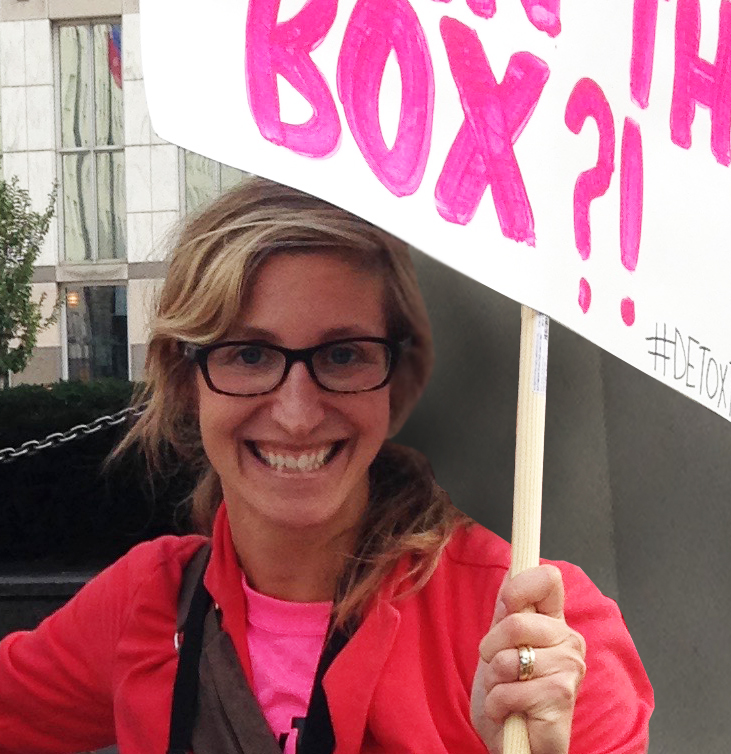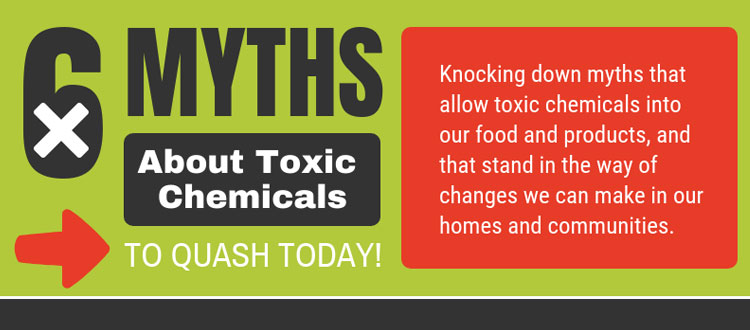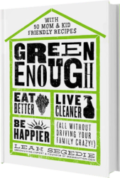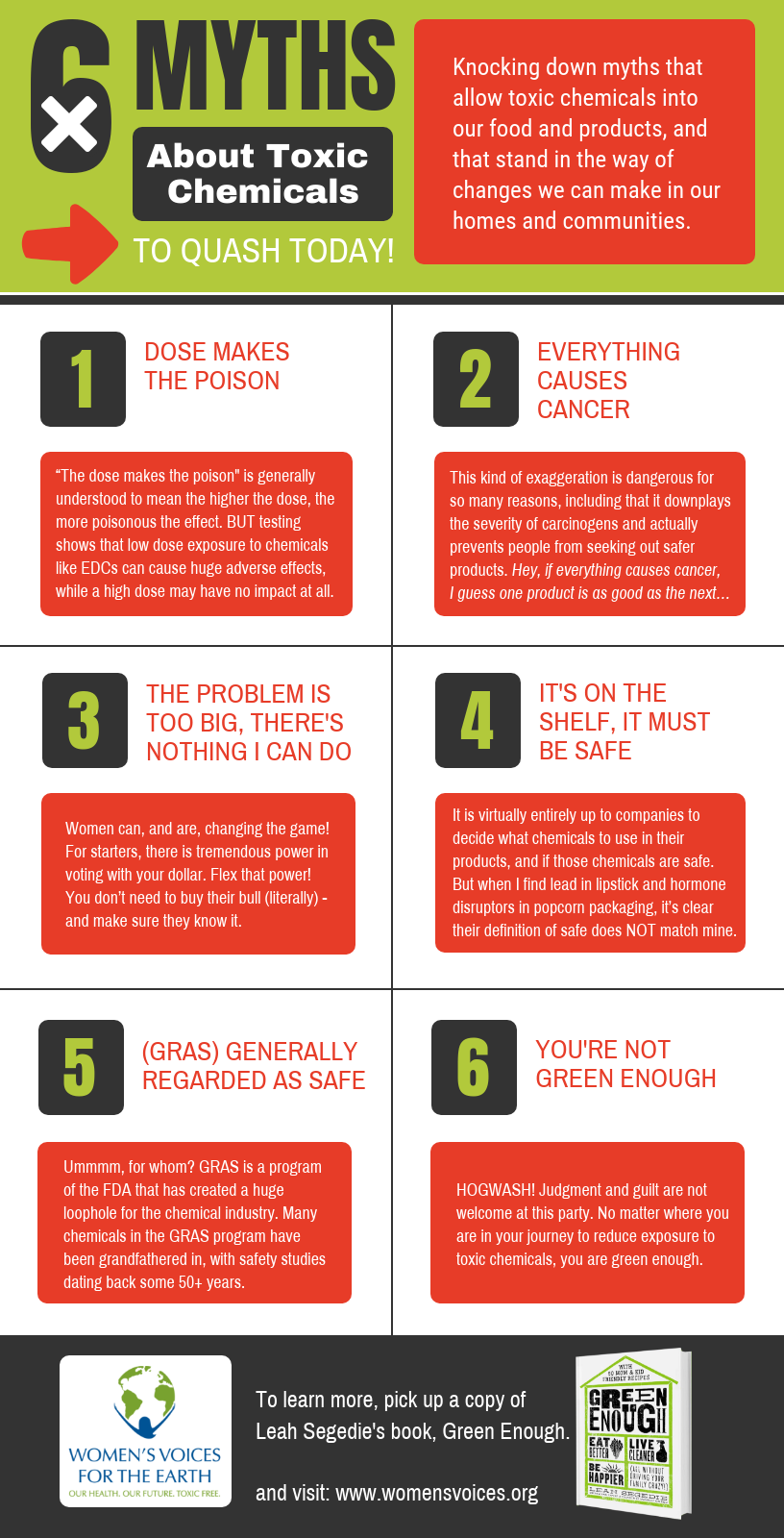6 Myths About Toxic Chemicals To Quash Today!
 |
|
Beth Conway |
Green Enough, a new book by Leah Segedie, is hot off the presses, and coming out swinging. Bang! Off the bat, page one, Leah knocks down some the myths that allow toxic chemicals into our food and products, and stand in the way of changes we can make in our homes. It’s time to call out these myths and quash them for good! Starting with these six:
1. Dose Makes the Poison
Classic toxicology states: “The dose makes the poison.” This means that generally, the higher the dose of a toxic substance, the more poisonous the effect. A little bit of cyanide might make you feel sick, whereas a large dose will kill you. This is true for a lot of substances … but not for all.
And that’s a BIG but.
In recent years, more and more cases have been discovered – particularly with endocrine disrupting chemicals (EDCs) — where the effects do not follow this pattern. In some cases, the lowest dose tested has huge adverse effects, whereas a much higher dose has no impact at all. This can happen because hormones (and the endocrine-disrupting chemicals that mimic them) frequently cause major changes in our bodies at incredibly low levels of exposure. Our bodies are geared to be sensitive and respond to small changes in hormone levels. Whereas when there are big shifts in hormone levels, the body may respond totally differently or not at all.
The problem is that safety assessors tend to apply “the dose makes the poison” to all substances – if they find a high dose appears to have no effect, they declare that any dose smaller than that should also be harmless. So, they never test the lower doses, and never find out the true harm they can cause.
2. Everything Causes Cancer
Nope. Everything does not cause cancer. This kind of exaggeration is dangerous because it can actually prevent people from seeking out safer products. “Hey, if everything causes cancer, I guess one product is as good as the next….” This myth also:
- diminishes the severity of carcinogens,
- downplays the fact that there are actual chemicals linked to cancer ending up in our products,
- encourages public confusion about the effect of chemicals on human health, and accusations of fear mongering when anyone speaks out,
- infers that you can’t avoid products that contain carcinogens (you can!), and, maybe worst of all,
- creates a kind of apathy where people give up, throw their hands in the air because, cancer is just inevitable. Which brings me to…
3. The Problem’s Too Big, There’s Nothing I Can Do
Not only can you make changes in your home, you can (and are) changing the game completely! Why, in the last year alone, women moved major corporate giants like Unilever and Procter & Gamble to commit to full fragrance disclosure. You convinced SC Johnson to remove toxic Galaxolide from their products. And you passed a ground-breaking bill in California that will, for the first time, require the makers of cleaning products to be completely transparent about what ingredients are in their products.
And let’s not forget the power of voting with your dollar. Women are the major purchasers of most consumer products. Controlling an estimated 60% of wealth in the U.S. and spending between $5 and $15 trillion annually, women constitute a powerful and driving force in the marketplace. Flex that power! You don’t need to buy their bull (literally) – and make sure they know it.
Don’t know where to start? Green Enough is a great place, and so are these 10 simple ways (and I mean SIMPLE) to reduce exposure in your home. Just by reading this blog, you’re already off to a great start!
4. Food and Products are Independently Tested for Safety Before They Hit the Shelves
Unfortunately, just because a product is on the shelf, doesn’t mean it’s safe. Chemical regulation in the United States is, well, abysmal. It is estimated that between 80,000 and 85,000 chemicals are in use in the environment in the US, yet only about 200 of these chemicals have been thoroughly tested for safety — and mostly for their acute impacts to adult males in industrial settings. From food packaging to feminine care products, it is virtually entirely up to companies to decide what chemicals to use in their products, and if those chemicals are safe. But, when I find lead in lipstick, spermicide in feminine wipes, and hormone disruptors in popcorn packaging, it’s crystal clear their definition of safe does NOT match mine.
5. GRAS (Generally Regarded as Safe)
Generally regarded as safe? Ummmm, for whom? GRAS is a program of the FDA that has created a huge loophole for the chemical industry. Many chemicals in the GRAS program have been grandfathered in, with safety studies dating back some 50+ years.
Here’s an example of the nonsense that is GRAS:
Back in 2015, the FDA reviewed triclosan and over 20 different chemicals used in hand soaps and sanitizers used in healthcare and couldn’t find enough publicly available data on the safety of these chemicals or their effectiveness at killing germs. The FDA realized that most of these antibacterial chemicals were designated as GRAS decades earlier based on very limited and incomplete data. Given more recent science on the potential hazards of these chemicals, and on the detection of these chemicals in humans, the FDA realized that they no longer felt they had sufficient information to justify these chemicals as safe (GRAS).
So, in 2015, they asked the manufacturers to supply them with that necessary safety and efficacy information. And here’s the interesting part— it’s now 2018 and the manufacturers have still not been able to supply the data the FDA is looking for.
In the meantime, because of their GRAS status, these chemicals have been manufactured in products for decades, and they’re still widely distributed. It begs the question of how exactly the manufacturers have been justifying the safety and efficacy of these products for themselves.
6. You’re Not Green Enough
Hogwash! (or as Leah would say, horse$&!% — pick up the book and you’ll appreciate what I’m talking about.) There is no perfect way to be ‘green,’ and we need to recognize that there are plenty of obstacles that stand in the way, from aggressive marketing and dismal regulation, to where we live and how much money we make. Whether you are a fierce advocate lobbying for safer products on Capitol Hill, or are just starting to read labels to find safer products for your home — there is room for you in this movement. Compassion and inclusion are the keys to knocking down the barriers that put our health, and the health of our planet, at risk. Judgment and guilt are not welcome at this party. No matter where you are in your journey to reduce exposure to toxic chemicals, you are green enough.
We’re in this together!
DOWNLOAD THE INFOGRAPHIC.
A little about Leah….
Leah Segedie is the founder Mamavation, the BookieBoo Network and ShiftCon Social Media Conference, and is a powerhouse leader in the environmental health and food movements. And she just published a book that I’ve been raving about in the post above. She’s busy ya’ll.





